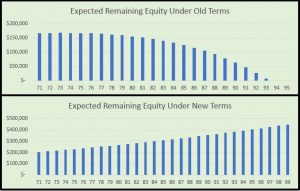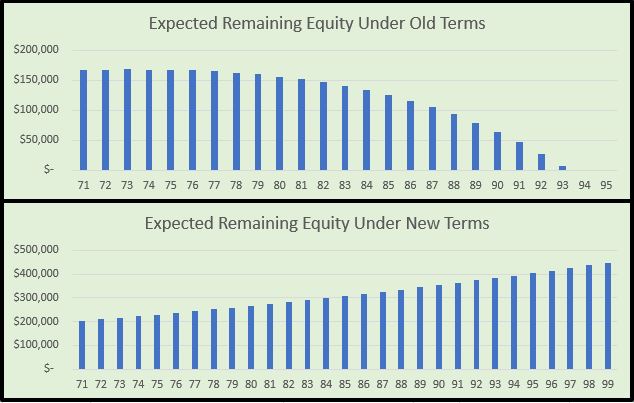HECM Reverse Mortgages After October 2, 2017
It”s been three weeks since FHA/HUD’s overhaul of the Reverse Mortgage program on October 2, 2017. When the changes were first announced in late August my first reaction was that they would turn out to be a good thing. Especially for homeowners using Reverse Mortgages. Although the changes do have their negative aspects, time is proving these changes will save homeowners many thousands in interest charges. Ultimately it is the best thing HUD could have done for the program.
What Changed on October 2?
Pros:
A lot changed for Reverse Mortgages on Oct 2. But the two primary changes deal with the costs of the loan and the maximum loan amounts. Specifically:
- Upfront Mortgage insurance was lowered from 2.5% for most loans to 2.0% for all loans.
- Annual Mortgage Insurance was lowered from 1.25% to just .5%
- Interest rates for my clients were averaging around 4.75% and have dropped closer to 3.8%
These are the good changes. When calculated over long periods of time these reductions save the homeowner tens and even hundreds of thousands of dollars. Depending on the size of the loan and how long they keep it.
Cons:
The change that most people are seeing as a negative is that the Principal Lending Factor or the amount of money we can borrower against a home was reduced by 5%-11% of the home’s value. This typically means people using a Reverse Mortgage will get less money out of refinancing or have to bring more money in when purchasing.
Why the October 2 changes?
Why did the October 2nd changes happen? Well, the short answer is prudence. People are living longer which adds risk to the solvency of the Reverse Mortgage program. FHA/HUD provides a guarantee for each of the Reverse Mortgages they insure. When homeowners with HECM Reverse Mortgages outlive the equity in their home, FHA/HUD protects the Bank using the Mortgage Insurance Fund. If people continue to outlive the equity in their home FHA/HUD won’t be able to meet the demand on these mortgages.
By making these changes FHA/HUD took a huge step in protecting a homeowner’s equity. Also in making sure that few homes with a HECM Reverse Mortgage will ever go upside down and draw on the Mortgage insurance fund.
The results of the October 2 changes:
Below are two graphs I’ve created. They show the equity life for a home owned by a 71-year-old borrower using a HECM Reverse Mortgage. The first graph is the projection for the Pre October 2, 2017 changes. The second graph shows the equity life post-October 2, 2017. Each of these graphs is based on FHA’s projections of property appreciation which is 4% annually and expected interest rates which reflect the figures I gave above.
The first graph is pretty typical for most reverse mortgages our team has done in Utah and Colorado over the past year. For most of these homeowners, the equity in the home is exhausted by around age 93.
The second graph shows that with the new changes to rates and loan amounts it is anticipated that the homeowner’s equity most likely will never run out in their lifetime and in fact could continue to increase over time if the markets remain stable.

Keep in mind that these projections are speculative. We don’t know what will happen to interest rates and market values over the next 30 years but the point is that these changes as best we can see are designed to protect the homeowner, the estate, and HUD. Everyone involved benefits with greater security and flexibility.
If you’d like to know more about how the Reverse Mortgage Changes of October 2, 2017, affect you or someone you love, give me a call.
If you’d like to read more about these changes you can reference my previous blog on September 14th which has additional links and resources.
Trevor Carlson
President – Reverse Mortgage Specialist
Heritage Reverse Mortgage
435-359-9000
www.heritagereversemortgage.com
Heritage NMLS #1497455 Trevor’s NMLS #: 267962
1060 South Main Street Bldg. B Suite 301B
St George Utah 84770

